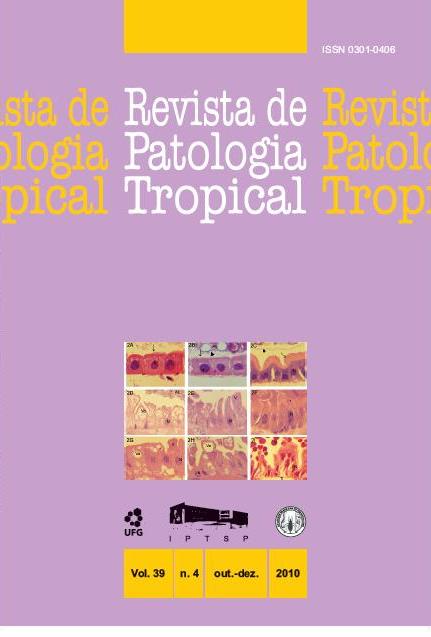Parasitological survey of food handlers in João Pessoa, Paraiba, Brazil
DOI:
https://doi.org/10.5216/rpt.v39i4.13069Keywords:
Enteroparasitosis, Food handlers, Protozoa.Abstract
Several enteroparasitosis may be acquired through food and water contaminatedby protozoa and helminth eggs, cysts and oocysts. Besides that, human hands are
one of the main causes of contamination. The current study has as its main goal to
characterize the parasitosis profile of food handlers at the University Restaurant
(RU) and University Restaurant Lauro Wanderley (RULW), both situated at a public
University in the state of Paraiba, Brazil. The present study included a sample of
67 food handlers and it was developed in three stages. During the first stage, an
epidemiological questionnaire was applied. In the second stage, fecal material
was analyzed by the Hoffman, Pons and Janner technique. The third and last stage
consisted of delivering the results obtained to the responsible nutritionist and
educational discussions. In the coproparasitological analysis it was verified that 52%
of the investigated handlers, from both restaurants, were infected mostly by fecaloral
transmitted species and geohelminths. The parasitological profile obtained was
the following: Endolimax nana (27%), Entamoeba histolytica/E. dyspar (10%),
Entamoeba coli (9%), Iodamoeba butschlii (1%), Strongyloides stercoralis (2%),
Ancylostomidae (1%), Ascaris lumbricoides (1%) and Trichuris trichiura (1%). We
conclude for the strong need of adopting a specific training program to instruct the
workers to become aware of the importance of appropriate sanitary procedures.
Downloads
Downloads
Published
How to Cite
Issue
Section
License
The manuscript submission must be accompanied by a letter signed by all authors stating the full name and email address, confirming that the material has not been published or is under consideration for publication elsewhere, and agreeing to transfer copyright in all media and formats for Journal of Tropical Pathology. The authors will not be paid for published articles. They are solely responsible for the content of those articles, even if the Editor holds the right to adjust them to the norms of the journal.
The reviewers will not be paid for the peer review process.

